A birthday dinner mishap could turn into a financial windfall for a police officer and his family — thanks to a rare, natural pearl that was the unexpected secret ingredient in his bowl of seafood stew.
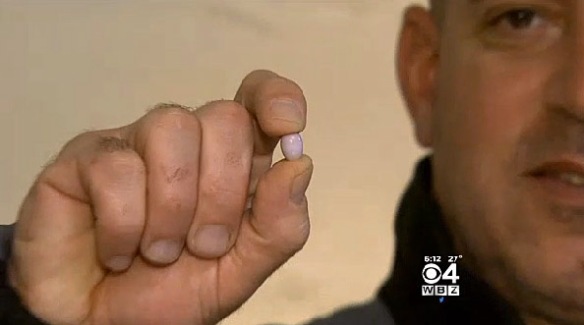
Mike Serino, a police officer from Swampscott, Mass., was celebrating his 40th birthday at a local Portuguese restaurant when he nearly swallowed a hard object, about the size of a jellybean.
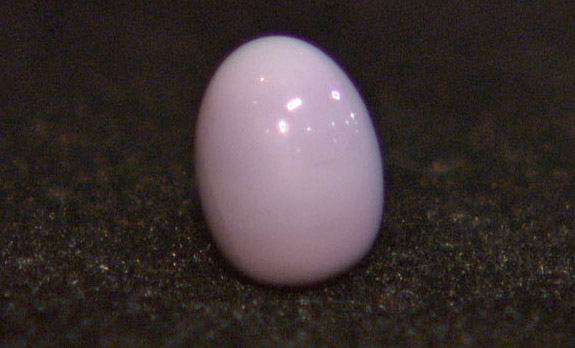
“We thought it was a rock,” Serino told Boston CBS affiliate WBZ-TV.
Serino didn’t know it at the time, but the smooth, purple object was an extremely rare and valuable natural pearl.
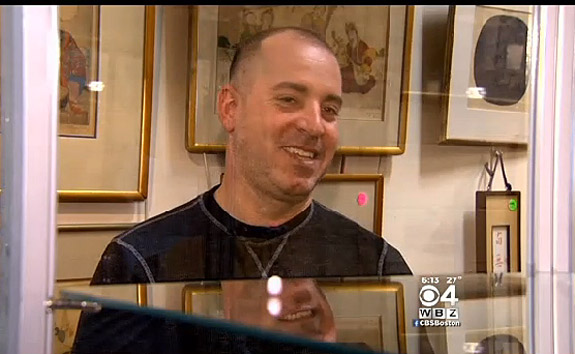
“We thought it was pretty, so we took it home,” he said.
For nearly six years, the purple pearl sat idly in his daughter’s jewelry box. Then, in December, Serino saw a news story about Kathleen Morelli from Virginia Beach, who found a valuable 4.5-carat natural pearl in a $15 bag of littleneck clams.
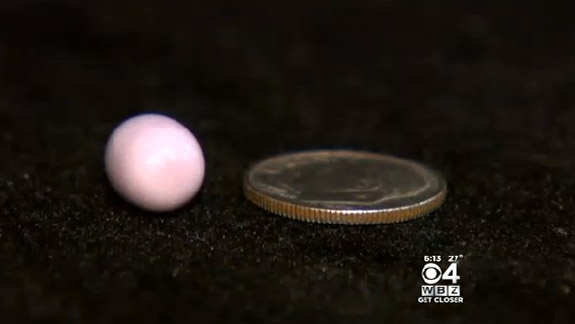
Serino sent his pearl to the Gemological Institute of America, which confirmed that the unexpected dinner ingredient was, in fact, a natural freshwater pearl from a northern quahog clam. The pearl weighed 6.22 carats and measured 11.43 mm by 8.36 mm.
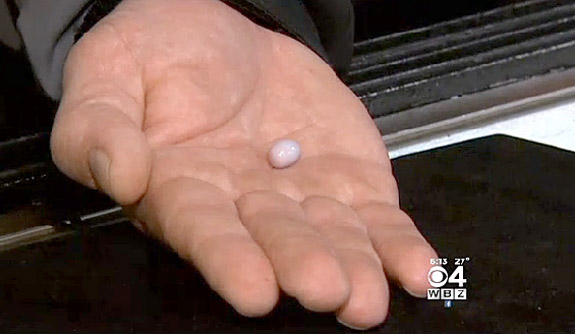
“They are pretty special,” noted Dona Dirlam, director of GIA’s gemological library and information center. “All natural pearls nowadays are quite special.”
Freshwater pearl expert Gina Latendresse, president of Nashville-based American Pearl Co., told The Boston Herald that she’s met many divers who have been collecting shells their entire lives and have never found a pearl of any kind, let alone a purple one.
Latendresse estimated that there’s a 1 in 100,000 chance of finding a natural pearl the size and color of Serino’s gem.
Natural pearls are organic gems, created by a mollusk totally by chance, without human intervention. When a foreign irritant gets into the mollusk’s shell, the bivalve secretes layer upon of layer of nacre to protect itself. Over time, the layering of iridescent nacre produces a pearl.
Cultured pearls, by comparison, are grown under controlled conditions, where a bead is implanted in the body of the mollusk to stimulate the secretion of nacre.
Serino and his family are hoping that the purple pearl will generate a lot of interest when it is offered for sale at Beverly, Mass-based Kaminski Auctions. Online bidding will open February 28 and conclude on March 15.
Harry Morgan, vice president of appraisal services for Kaminski Auctions, told The Boston Herald that the bidding will start at $5,000, but he expects the pearl to yield from $10,000 to $15,000.
“It was a good seafood stew and now it’s even more tasty that I’ve got this pearl that’s worth thousands,” Serino told WBZ-TV.
The Serinos are still debating what they will do with the proceeds from the auction. Dad wants a new Corvette, while Mom and daughters Lauren, 22, Julia, 14, and Isabelle, 2, are pitching for a new kitchen.
“I think we’re going to go with the kitchen because I have to live with my three daughters and my wife, and they can be tough,” Serino joked.
The Portuguese restaurant where Serino found the pearl — or, perhaps, where the pearl found Serino — was closed a few years ago.
Images: Screen captures via WBZ-TV
No comments:
Post a Comment